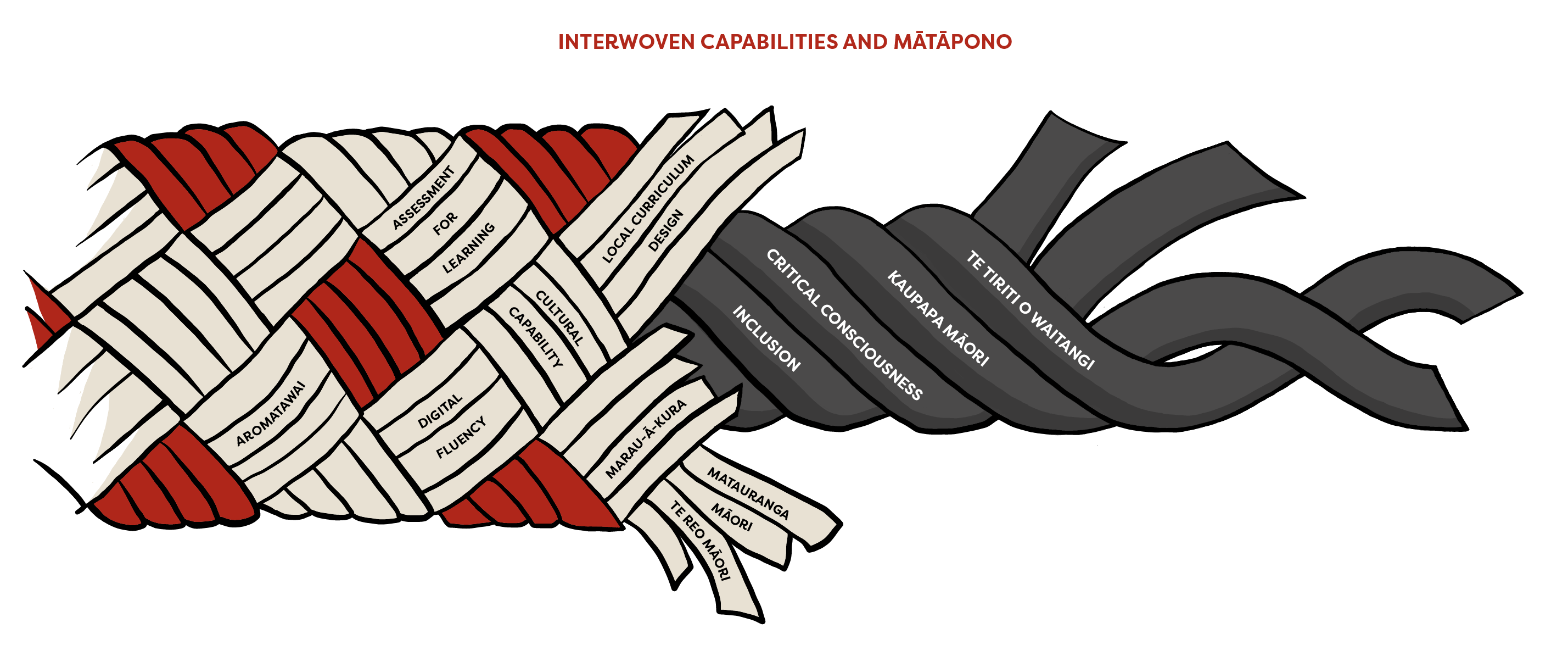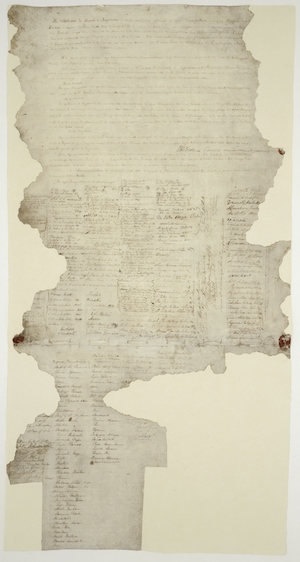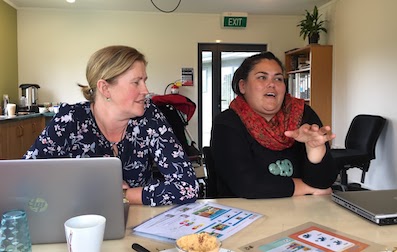Ngā mātāpono
The principles
Ngā hua o te mahi tahi | Collective impact 
Four mātāpono (principles) offer ways of strengthening those capabilities required to transform outcomes for our tamariki-mokopuna. They underpin the PLD priorities and connect to policy, practice guidelines, and relationships across our education system.
Ngā mātāpono are the four central muka, the core, that address the power dynamics and mental models that are the largest barriers to system change for equitable outcomes. Ngā mātāpono are:
The four mātāpono are interwoven through the four PLD priorities for English-medium settings.

Te Tiriti o Waitangi
Te Tiriti o Waitangi is an essential foundation for the capabilities if we are to succeed in achieving equity in our education system.

Te Tiriti o Waitangi
The Treaty of Waitangi

He Whakaputanga o te Rangatiratanga o Nu Tireni
The Declaration of Independence of New Zealand
Te Tiriti o Waitangi and its predecessor, He Whakaputanga o te Rangatiratanga o Nu Tireni (the Declaration of Independence of New Zealand), are two of our nation’s founding documents. They are statements of mana that assert and acknowledge tino rangatiratanga.
The kaupapa for our mahi acknowledges our shared obligation to make the bicultural foundations of Aotearoa New Zealand real, as promised in the New Zealand Curriculum and all our professional frameworks.
This principle requires us to:
- explore our personal identity as tangata whenua or tangata tiriti
- examine our personal and shared obligations as Treaty partners
- understand the meaning of mana ōrite (equity) and what this looks and sounds like for everyday interactions between ākonga, kaiako, tumuaki, and whānau.
These tasks, and the others implied by the kaupapa, are not easy and are likely to be different for different people. However, they require us all to reckon with our history, our current realities, and our understandings of what biculturalism looks like in a nation that is increasingly diverse.
Find more about: Te Tiriti o Waitangi
Kaupapa Māori is about identity: validating and valuing what it is to think, act, feel, and be Māori. It is about creating spaces that ensure Māori are free to be themselves. Kaupapa Māori is also a guide for thinking about and enacting the capabilities.
Our kaupapa includes the following statement:
- The design of regionally allocated professional learning will be built upon the principles of kaupapa Māori to ensure mana-enhancing experiences for all tamariki-mokopuna and whānau.
Kaupapa Māori education emerged from a movement directed at resisting colonisation and revitalising Māori language, culture, and aspirations for self-determination. It is based upon a set of principles put forward by Graham Hingangaroa Smith in 1990. This was a time when whānau and iwi founded kōhanga reo to resist the loss of te reo Māori.
Kaupapa Māori challenges Western ideas of what constitutes valid knowledge. Rather than abuse and degrade Māori ways of knowing, it allows Māori communities to reclaim ownership and support the revitalisation and protection of all things Māori. This enables Māori to take a proactive role in bringing about the changes that they identify as being important, and take responsibility for transforming their own conditions. They are therefore repositioning away from deficit positions about their status within colonisation, to positions of agency.
– Extract from Voices Series from the Kia Eke Panuku: Leading the Change
This principle requires us to:
- understand the principle of tino rangatiratanga and how Māori can exercise it within schools and kura
- understand ako Māori and deliberately use culturally sustaining pedagogical practices in learning contexts
- understand the value and regard for others within whanaungatanga and actively extend whanaungatanga across all our relationships
- understand mana and what mana-enhancing experiences look like for tamariki-mokopuna and whānau
- value cultural capital and ensure ākonga Māori do not feel compelled to leave their Māoritanga at the school gate.
Embracing kaupapa Māori across all learning settings in Aotearoa New Zealand is vital for putting ākonga at the rito. We can only truly put ākonga at the heart when all ākonga have agency as who they are.
Find more about: Kaupapa Māori
Te wetewete i te hiringa | Critical consciousness
Critical consciousness offers a way of addressing inequities in our education system. The kaupapa states:
Accordingly, regionally allocated professional learning in Aotearoa, as a lever for transformative change, will eliminate racism, discrimination and bias, return rangatiratanga, and strengthen equity.
We talk a lot about transformative change in education. Critical consciousness is a pathway to transformation that arose from the teachings of Brazilian educator, Paulo Friere. These ideas have been adapted all around the world by people seeking to transform education systems around principles of social justice, liberation from unjust conditions, and recognition that ultimately freedom from oppression is freedom for us all.
The principle requires us to:
- think critically about the role of schooling in Aotearoa New Zealand and the curriculum intent that all ākonga are enabled to participate equally as critical, active, informed, and responsible citizens
- identify, discuss, and resist the external structures and systems, and the interpersonal beliefs, assumptions, and actions that uphold inequity and injustice
- notice and resist the unconscious biases and hidden curriculum (unspoken values and rules) that privilege some and exclude others
- create spaces where racism and discrimination is identified and challenged
- ensure tamariki-mokopuna and their whānau, hapū, iwi, and communities have agency over their educational experience
- take responsibility for, and critically examine, the impact of individual and collective decisions.
By combining the principle of critical consciousness with those of Te Tiriti o Waitangi, kaupapa Māori, and inclusion we can become more deliberate about changing what we do. Through critical thought, dialogue, and action, each of us can take part in creating a more equitable system where all our tamariki-mokopuna can flourish.
Find more about: Critical consciousness
He whakawhāiti | Inclusion
As a founding principle for the capabilities, inclusion means making sure that education in Aotearoa fits the needs and aspirations of all ākonga.
Teachers are responsible for groups of learners with histories, perspectives, values and cultures that may differ from their own. These differences can even vary between each learner, in significant ways. This is the beginning of the development of the openness and reflection that teachers need to create relationships for learning with learners who have cultural knowledge, languages and experiences different to theirs.
– Tapasā: Cultural Competencies Framework for Teachers of Pacific Learners, page 7
The kaupapa states that “professional learning will work to ensure mana-enhancing experiences for tamariki-mokopuna and whānau”. It speaks of returning rangatiranga, eliminating discrimination and bias, strengthening equity, and ensuring all our tamariki-mokopuna feel they belong.
The principle of inclusion is mandated by law and in educational policies that establish access to quality education as a basic human right. However, we know that many tamariki-mokopuna and whānau do not feel included in education at school.
New Zealand is a signatory to the United Nations Convention on the Rights of Persons with Disabilities (UNCRPD), which recognises the rights of tangata whaikaha (people with disabilities) to education. However, a clause allowing for “reasonable accommodation” has been interpreted in ways that have excluded some tangata whaikaha from their local schools and the opportunity to access the curriculum alongside their peers.
The inclusion principle involves actively seeking to identify, reduce, and eliminate the conditions that lead to exclusion, such as bias, deficit thinking, bullying, and a competitive ethos.
This principle requires us to:
- take a strengths-based approach to teaching and learning that is responsive to ākonga strengths, capabilities, and interests, including their unique language, identity, and culture
- value diversity and demonstrating it through conscious acts of teaching, leadership, and facilitation
- create learning communities in which difference and diversity is valued and seen as a community strength
- create collaborative relationships that build trust through whanaungatanga and manaakitanga
- use a universal design for learning approach to create flexible, barrier-free environments and learning experiences.
Find more about: Inclusion
